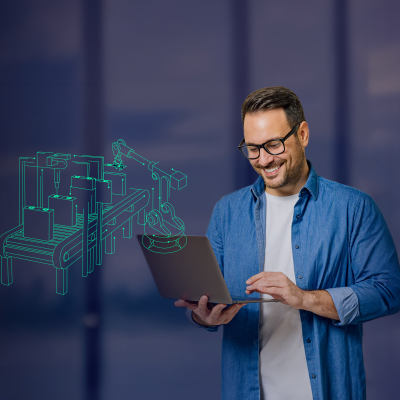
Additive Manufacturing Concept
While targeting for higher efficiency, testing of new concepts in real plant operations is risky. The BMW Group wanted to sound the capabilities of a digital twin with respect to Additive Manufacturing processes and technology. Together we developed a Digital Twin based on a 3D material flow simulation model created with the Siemens software "Plant Simulation". A simulation and evaluation of several planning and scaling scenarios for printing of selected parts was conducted. As a result, several concepts were evaluated and verified towards feasibility and profitability without disturbing the real plant operation.
The automotive industry is known as tough and highly competitive market, where innovation is key to success. Faster development of optimized or future manufacturing concepts therefore is paramount. Though making changes to the critical infrastructure (assembly lines) in factories is a big concern to OEMs.
During the reorganization of its development center for additive manufacturing, BMW wanted to explore the capabilities of a Digital Twin of production.
The goal was to explore actual benefits of a Digital Twin to plan, run and analyze changes to factory set-ups and line design in a save environment prior to implementation.
Development of a Digital Twin based on a 3D material flow simulation model created with the Siemens software "Plant Simulation".
For this we performed a 3D scan, turning infrastructure and equipment into a virtual 3D model with the processing and analytical capacity of a Digital Twin as a basis for considered simulation scenarios.
Simulation and evaluation of several planning and scaling scenarios for printing of selected parts became possible without interfering with the running processes in the factory.
Successful scenarios can now much faster and with less effort be installed in the real production environment.
Several concepts are evaluated and verified towards feasibility and profitability without disturbing the real plant operation.
- Ability to scale and agility to rearrange factory set-up/assembly lines
- Optimized material flow and working environment in the plant
- Faster time to delivery and reduced unplanned downtimes
Dive deeper: Related content
Our industry leader






 Contact Us
Contact Us